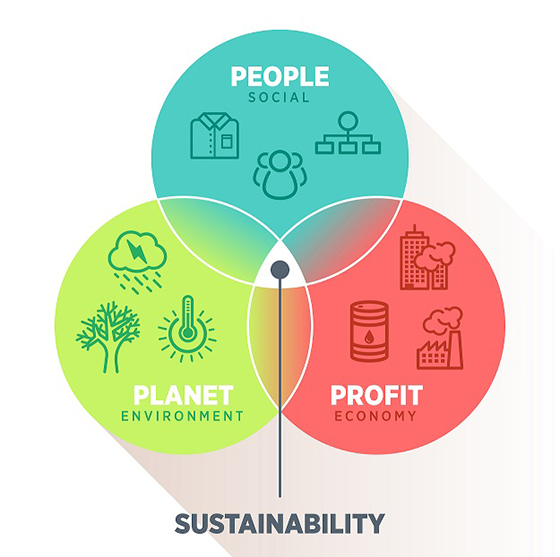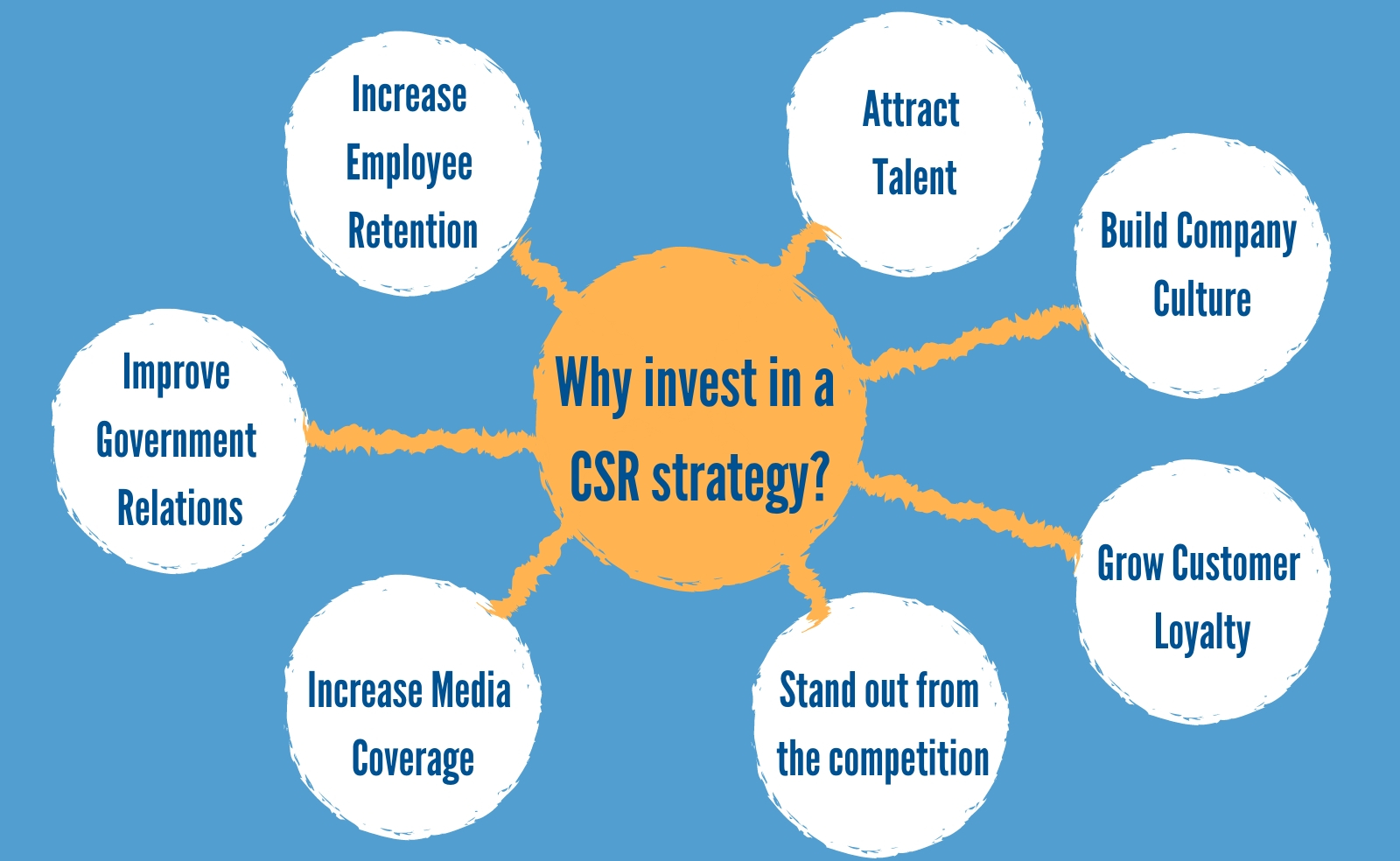CSR, or Corporate Social Responsibility, is no longer a good-to-have element for corporate firms. In today’s world, it is as much a necessity as marketing or PR.

Contrary to popular notion, corporate social responsibility is not about what many call ‘wokeism’.
Though derogatory in connotation, wokeism refers to the unethical practice of promoting an ideology for personal gains and political benefits.
Being socially responsible has many facets, and there are many approaches to it. Some companies prefer donating funds while others believe in providing human resources. All approaches to social responsibility have their own merits.
Today we will go through the steps and ideas to keep in mind when developing a CSR strategy for your company.
We will also highlight a few crucial nuances about corporate social responsibility.

How to create a successful CSR strategy in 2022
Here are the broad ideas, subjects, and considerations to keep in mind when creating a CSR strategy. But first, let’s understand the basics.
The importance of a CSR strategy
A few stats will make it evident that corporate social responsibility is no longer a disposable element for corporations.
According to Harvard Business School, 70% of Americans believe that corporates have a responsibility towards the world and the environment.
On top of that, more than 40% of investors born after the year 2000 research about a company’s CSR policies before investing.
These two are among the huge list of stats about the correlation between corporate success and corporate social responsibility. However, many companies still treat corporate social responsibility as an afterthought.
These companies will fail to make it big in the long run if they do not alter their policies and visions. All companies struggling with CSR should learn how to create a CSR strategy.
As you can see, corporate social responsibility is undeniably important in the 21st-century market.
However, there is a general misconception about what social responsibility means for corporations.
To put it simply, social responsibility entails anything that involves giving back to society without any hopes of immediate monetary gains.
Donations are a small component of corporate social responsibilities. In the present scenario, mere monetary donations are not enough for a solid CSR strategy.
Social responsibility for corporations involves building a brand and then executing the visions of the brand. It also plays a big role in what employees feel about their workspace and how desirable a company is in the job market.
Now that we have a basic idea of what corporate social responsibility means, let’s understand its different components.

Components of CSR
To further understand the different things social responsibility entails, we can broadly classify four areas where corporates have a social liability:
a) Environmental responsibility
It is no news that big companies are hugely responsible for climate change and allied environmental issues. It makes environmental responsibility all the more important for companies that leave a substantial carbon footprint every year. It is one of the key areas where corporations work through various conservation and restoration projects.
b) Philanthropic responsibility
Anyone in possession of wealth must understand that they are at that position by various strokes of luck and privilege.
Giving it back to society is a very noble thought. It also makes the world a better place for everyone. That’s the reason corporate companies spend a substantial amount every year on philanthropic causes.
In the aftermath of the Covid-19 pandemic, leading tech companies got together to donate for the underprivileged.
c) Ethical responsibility
Ethical responsibility entails staying from social evils like worker exploitation, child labor, and so on. It is also an important part of making a company a better place to work at.
d) Economic responsibility
By economic responsibilities, we mean the role that big companies have in fostering and maintaining a thriving market.
Unsustainable greed can often lead to overall loss at the cost of individual gain. By being responsible for market economics, big companies aim to prevent monopolization and hierarchical capitalism.
ROI on CSR strategy
While getting exponential returns should not be the motivation to launch a CSR program, it is one of the ramifications.
Studies have shown a positive correlation between strong CSR policies and financial growth.
In fact, 80% of Fortune 500 companies have strong CSR policies and programs. It is evident that having a strong foundation in corporate social responsibility helps businesses earn more.
The reason behind this phenomenon is also very simple to understand. 25% of consumers have zero tolerance for companies that do not abide by social responsibilities. That percentage is only going to increase as the millennials and Gen Z become the majority of the market.
In the coming years, CSR strategy will play a key role in a company’s growth.
Another component of ROI on CSR is employee retention.
70% of employees would consider not working for a company that does not have a larger purpose. Similarly, companies should also focus on employees who have a stand on larger social issues.
A talent acquisition test template is often the best way to filter candidates who pass these requirements. Employees, on their ends, also do their research about a company’s CSR practices before joining it.
Now that we have glanced over the basic components of CSR and its importance, let’s focus on three things that define a successful CSR strategy.
a) Set an achievable goal
There is a limit to what one company alone can do for the greater good of society.
Many CSR strategies are overly ambitious. While that is not necessarily bad, you cannot possibly do substantial work in the fields of education, health, climate, poverty, and so on in a single year.
What’s more concerning is that you might miss all your targets with the aim of achieving everything. It is very important for companies to understand their limitations when it comes to CSR. If not done right, CSR strategies can also attract negative publicity.
For small to medium businesses, focusing on a single area is often a good idea. It also has the benefit of creating positive brand awareness.
If your company works a lot in the education sector in your city, people will automatically associate education with your brand. Many customers develop loyalty towards brands that have a positive brand image.
To put it in one line, make sure your CSR strategy includes goals and milestones that you can achieve in the foreseeable future.
b) Involve stakeholders in the strategizing phase
Every stakeholder must have the right to put forward an opinion when it comes to CSR strategy.
With companies that have hundreds of employees, this can be done through surveys and polls. For smaller teams, the best way forward is to have a meeting with everyone. From investors to employees, everyone has an opinion about the ideas the company wants to represent.
If there is a conflict at the core, it will become a huge problem for the company in the long run. It’s very important to resolve conflicts in the ideation phase in order to make execution seamless.
There are many benefits to having conflicting opinions on board. Since there is no clear definition of what is a socially beneficial action, it is very important to have debates and discussions. In the end, only those ideas should proceed that have consensus.
While involving each stakeholder is not conceivable for many big firms, they should aim for a voice that represents every department. Social responsibility for corporate companies is also about taking care of internal grievances. Overlooking this aspect can lead to many problems in the execution phase.

c) Ensure sustainability in a CSR strategy
CSR strategies should always be long-term. No company can have any meaningful impact on society in a short span of time.
Be it improving educational facilities, aiming to become carbon neutral, or fostering a local economy, nothing worth sustainable value can be accomplished over a one or two year timeframe.
In terms of healthcare, education, infrastructure, etc., funds play a big role in bringing sustainable change. However, the CSR budget may not always allow that. For that reason, it is important to take small yet consistent steps to eventually reach the goal.
When it comes to positive environmental actions, results take anywhere between 10 to 50 years to show up.
If you decide to stop using plastic in all operations, the overall benefits will be substantial only after a long time. Short-term CSR strategies not only fail to achieve their target, but also come off as gimmicky.
Ensuring sustainability in CSR practices is all about ingraining the ideology of welfare in the office culture. Once it is a deep-rooted part of the company’s ethics and culture, CSR strategies take care of themselves. For these reasons, ensure that your company’s CSR strategy is aiming for long-term goals and visions.
Conclusion
Corporate social strategy is now more important than ever.
To sum it up, it is about staying true to a company’s long-term vision in terms of social responsibility.
Every company has a vision for the greater good, and corporate social strategies give these visions a shape.
Author: Kate Brown










